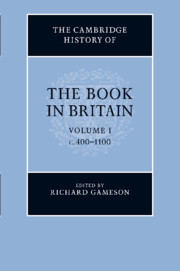
- Cited by 6
-
Cited byCrossref Citations
This Book has been cited by the following publications. This list is generated based on data provided by Crossref.
Lees, Clare A. 2012. The Cambridge History of Early Medieval English Literature.
Rundle, David 2019. The Renaissance Reform of the Book and Britain.
2019. Books Reviewed:Anglia133–136 (2015–2018). Anglia, Vol. 137, Issue. 1, p. 202.
Mullen, Alex and Tomlin, R.S.O. 2019. More from the Romano-British Poets? A Possible Metrical Inscription from East Farleigh, Kent. Britannia, Vol. 50, Issue. , p. 367.
Gautier, Alban 2020. Mémoires de Trajan, mémoires d’Hadrien. p. 255.
Runner, Jacob Wayne 2021. An Unseen Eighth Rune: Runic Legacy and Multiliteral Performativity in Cynewulf’s The Fates of the Apostles. Humanities, Vol. 10, Issue. 4, p. 124.
- Publisher:
- Cambridge University Press
- Online publication date:
- March 2012
- Print publication year:
- 2011
- Online ISBN:
- 9780511978029
- Collection:
- Cambridge Histories - Literature


